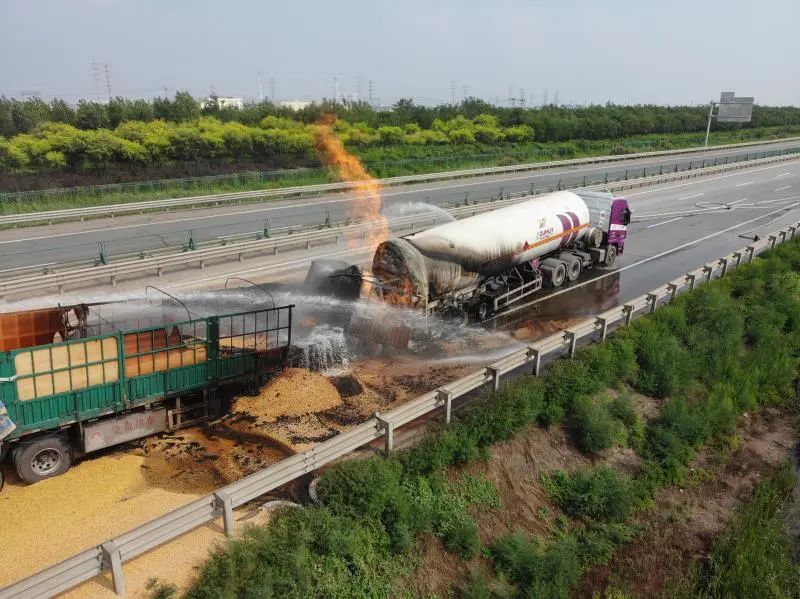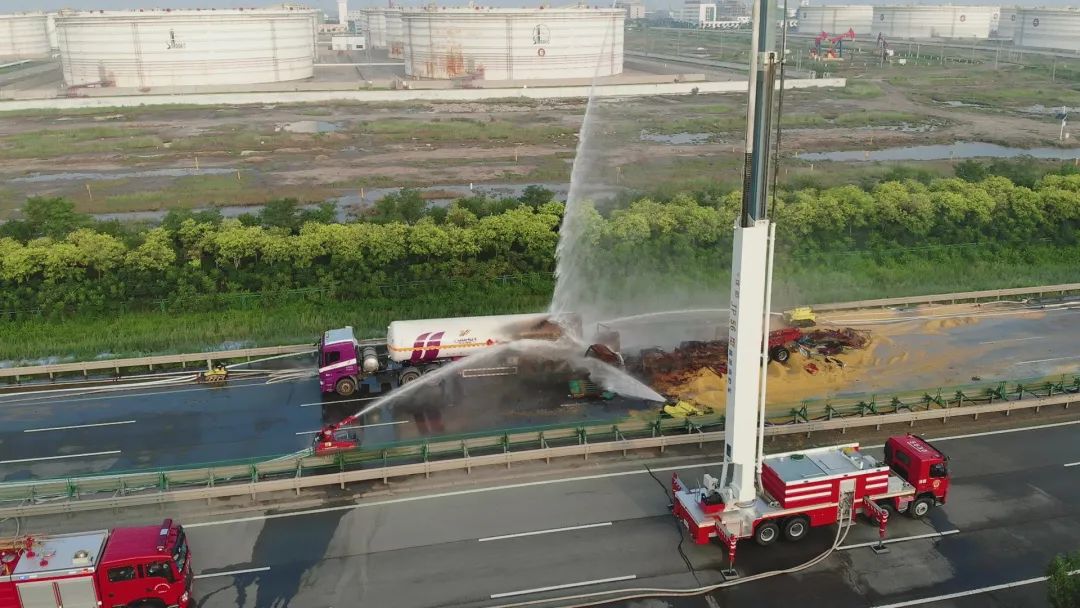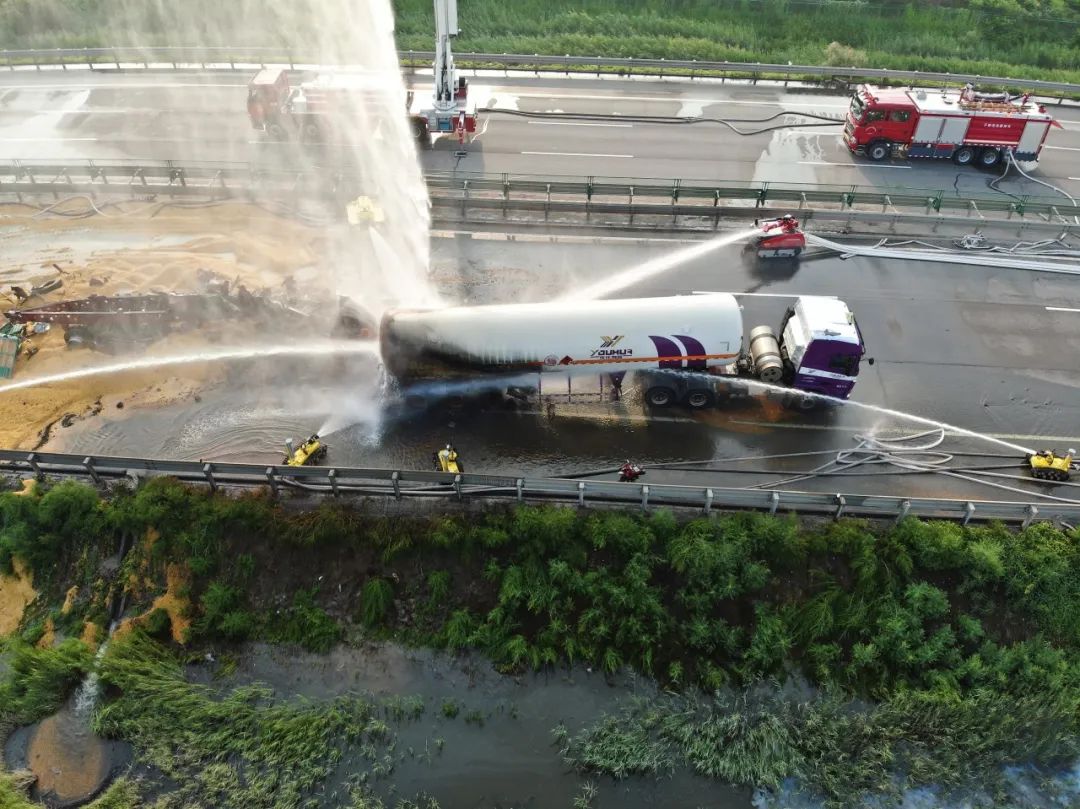On August 3, Haijiang Rescue Team, led by Tianjin Emergency Management Bureau, successfully participated in the disposal of the fire accident of LNG tanker, avoiding secondary disasters.
At 13:49 on August 3, a LNG tanker leaked and caught fire due to a collision near the Hongqi Road interchange on Qinbin Highway in Binhai New Area, Tianjin. There were no casualties at the scene. Haijiang rescue team quickly rushed to the scene after receiving the task to cooperate with various departments for disposal.

Haijiang rescue team cooperated with the Emergency Rescue Tianjin Petrochemical Team and Tianjin Fire and Rescue General Brigade to carry out the rescue method of cooling the operation box at the rear of the burning tanker and the side tanks, and assisted the traffic control department in the implementation of vehicle diversion and personnel evacuation on the accident road.

At 7:54 p.m. on August 4, the open fire at the scene was extinguished. Hai Jiang Group rescue team in cooperation with the fire department investigation found that the tanker tail gas phase valve, liquid phase valve, pressurization valve, venting valve, emergency shut-off valve and other valves have been damaged.
At 9:37 on August 4, after more than 20 hours, the fire at the scene was finally completely extinguished with the joint efforts of Tianjin Fire and Rescue General Brigade, Haijiang Rescue Team and other departments.

At 13:20, the residual fluid was discharged. The accident caused injuries to the driver of the truck. Directed by Tianjin Emergency Management Bureau, Haijiang Rescue Team successfully completed the disposal task.
The accident once again reminds the alarm of the safe driving of hazardous materials transportation vehicles.
Please keep the following safety instructions in mind!
1. Vehicle drivers and escorts engaged in the transportation of hazardous chemicals must all be trained in the relevant laws, rules and regulations, safety knowledge and professional techniques, and understand the nature of the hazardous chemicals being transported, their hazardous characteristics and emergency measures in the event of accidents. Only those who have passed the examination are allowed to work.
2. When carrying highly toxic, explosive, flammable or radioactive hazardous chemicals, tank-type vehicles or vans and special containers should be equipped. Vehicles should be installed with travel recorders and positioning systems.
3. It is necessary to promote the daily maintenance, repair and safety inspection of vehicles for the transportation of dangerous chemicals. At the same time, we should focus on checking whether vehicle signs and markings are complete. During transportation, inspections should be strengthened to be alert to the leakage of hazardous chemicals. Due to the bumps and vibrations of the vehicle during transportation, it is likely to cause package breakage and accidents.
4. Roads, lights, signs and fire-fighting facilities at the site of loading and unloading of dangerous chemicals must meet the conditions for safe loading and unloading. When loading or unloading hazardous chemicals, cars should be parked in the open air. Workers should pay attention to their own protection, wear necessary protective gear, strictly observe the operating procedures, load and unload lightly, and strictly prohibit falling, bumping, rolling, pressing and inverting.
5. Vehicles loaded with hazardous chemicals shall not be parked in schools, institutions, marketplaces, places of interest or scenic spots; if they must be loaded or unloaded or temporarily parked in such areas, safety measures shall be taken and the consent of the local public security department shall be obtained. When parking the vehicle, it should be guarded, and it is not permitted for idle persons to approach the vehicle, so as to ensure the safety of the vehicle.
6. Hazardous chemicals should be cleaned up after unloading, and vehicles and tools contaminated by hazardous chemicals must be scrubbed and cleansed.